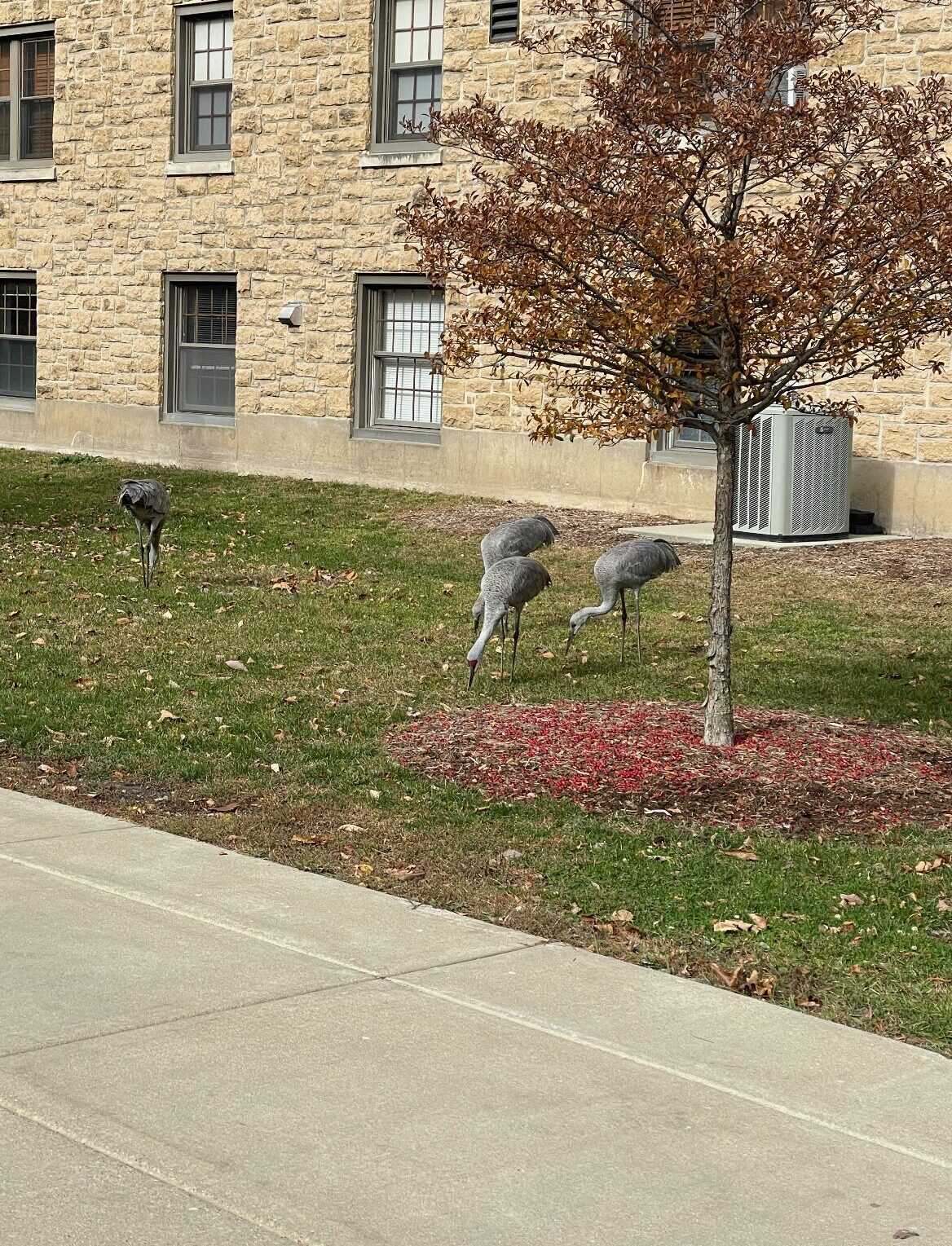University of Wisconsin students are frequently sighting cranes roaming around campus, with some cranes even making use of the sidewalks.
The cranes, specifically sandhill cranes, are making themselves comfortable once again in Wisconsin as temperatures warm up after their winter vacation, according to Department of Forest and Wildlife Ecology professor Anna Pidgeon. Pidgeon said sandhill cranes are one of the only early migrant bird species in Wisconsin, explaining why students are seeing more of them recently.
The cranes that choose to breed in Wisconsin typically spend late March through October in the state and then spend the rest of the year in more southern regions, Pidgeon said.
Sandhill cranes migrate to areas where they can find adequate food and resting areas. During the summer season, sandhill cranes forage and feast on insect larvae, mice, frogs, grains and much more. They typically feed from marshes and shallow waters, Pidgeon said. During the early spring season, there are fewer options, so they will eat what they can find to sustain themselves.
Multiple sclerosis awareness month highlights need for more research, accommodations
According to the National Wildlife Federation, the mating season for sandhill cranes occurs during the spring. Male and female birds perform mating calls and dancing displays to signal to each other that they are looking for a mate with whom they will mate with for life. Once they find their mate, sandhill cranes usually lay two eggs, which take about a month to hatch and over two months to become independent. From then on, they can live for up to 20 years or more.
Young sandhill cranes are a cinnamon-brown and white color, and they do not yet have the distinct red patch on their forehead that adult sandhill cranes have. Adults are identifiable by this red patch, long black legs and are typically gray and brown in color.
As of today, sandhill crane populations are stable and increasing, Pidgeon said. In fact, Wisconsin currently prohibits hunting sandhill cranes. The cranes are likely comfortable around campus because people do not hunt or harass them, Pidgeon said.
Science writer Sabrina Imbler to visit UW as science journalist in residence
Although their population is stable, sandhill cranes are still threatened by habitat loss, collision risk due to cell tower lines and wind turbines, pesticides and ingestion of lead and plastic.


















